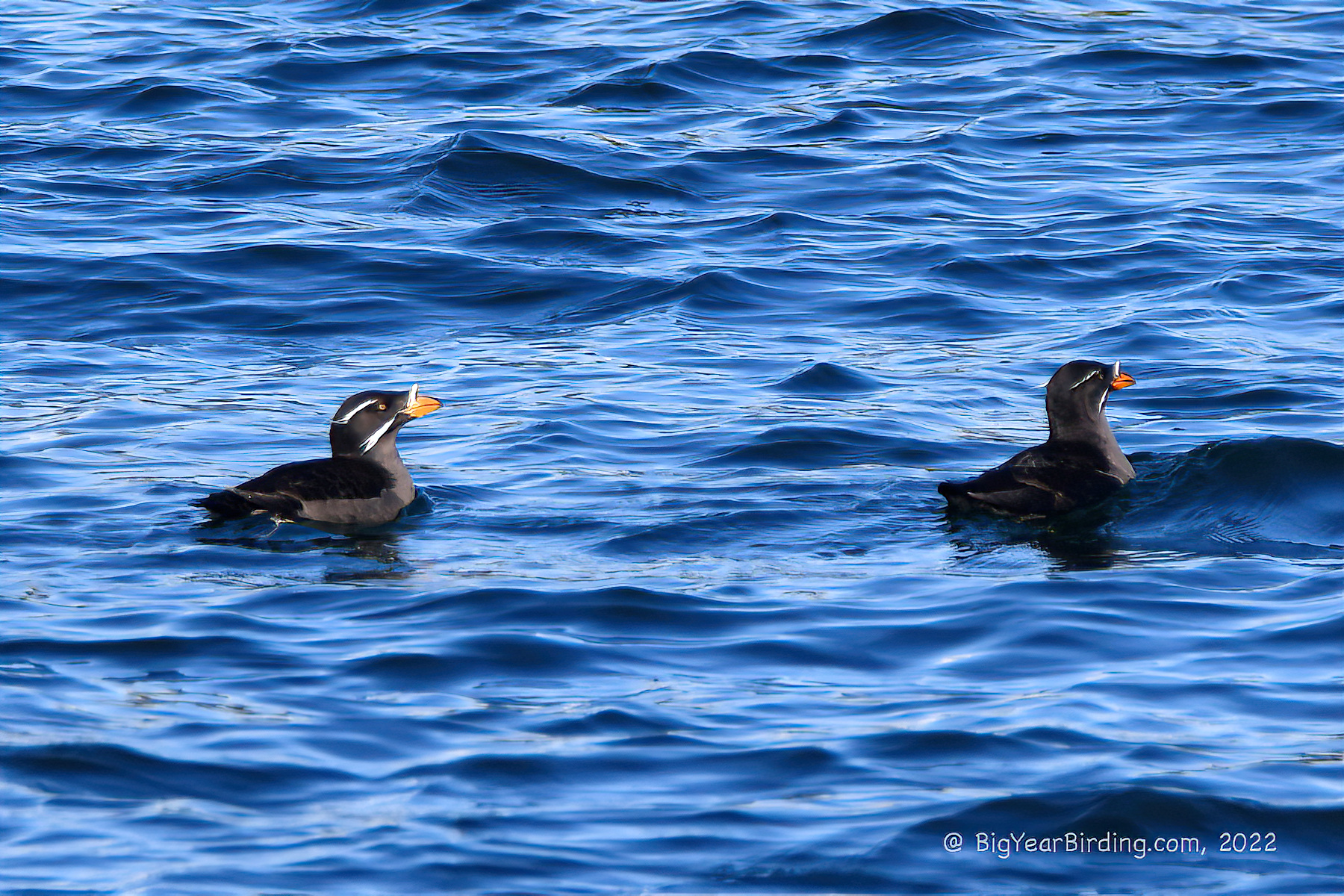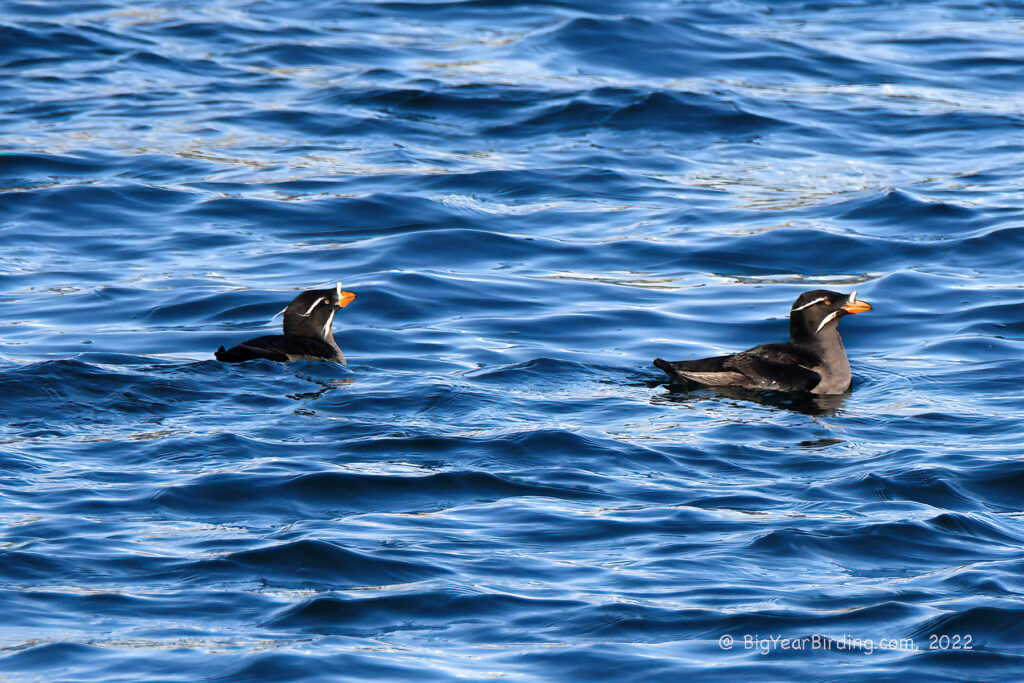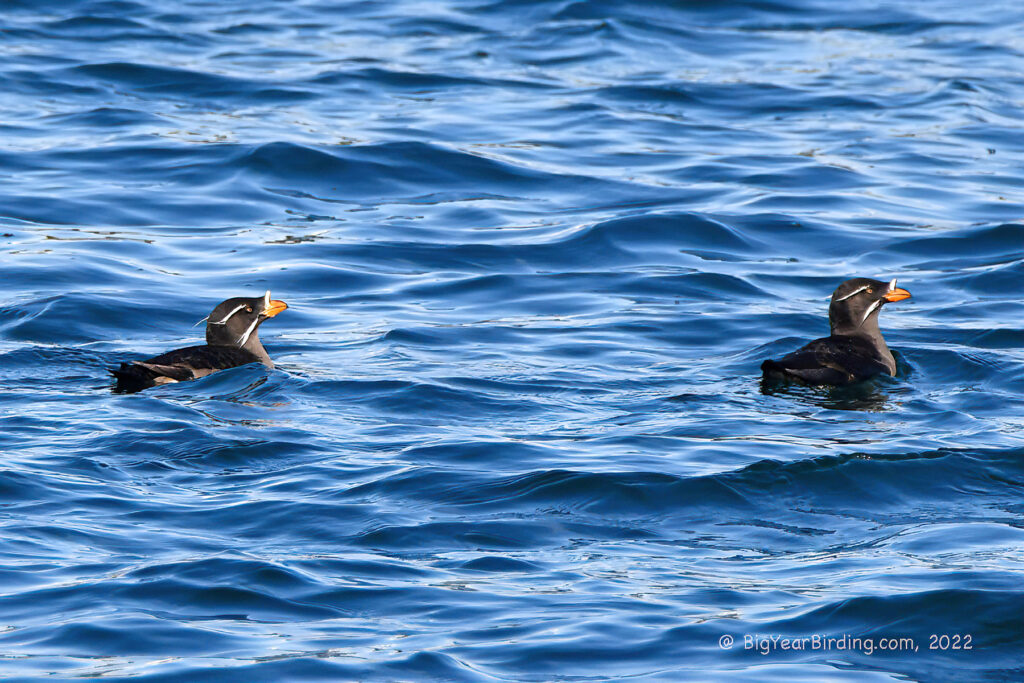
The Rhinoceros Auklet is a seabird species that can be found in the North Pacific Ocean, from Japan to the western coast of North America. This bird species belongs to the family Alcidae and is characterized by its striking horn-shaped beak that gives it its name. The Rhinoceros Auklet is medium-sized, measuring 12-16 inches (30-41 cm) in length and weighing between 14-24 ounces (400-700 grams).

One of the distinguishing field marks of the Rhinoceros Auklet is its unique bill structure, which has a pointed horn on the upper mandible that becomes more pronounced during the breeding season. The bill is black in color, as are the eyes, and the birds have a distinctive white patch of feathers around the eyes. The Rhinoceros Auklet also has a black body with white underparts and dark wings.
During the breeding season, Rhinoceros Auklets migrate to their breeding colonies, which can be found on islands and rocky coastal areas in the North Pacific. In North America, they breed on islands along the coast of Alaska and British Columbia. The breeding season starts in late April, and the birds lay a single egg in a burrow or crevice. After the egg is hatched, the parents take turns feeding the chick until it fledges and becomes independent.
Outside of the breeding season, the Rhinoceros Auklet spends most of its time at sea, feeding on small fish and plankton. They are strong fliers and can dive to depths of up to 150 feet (45 meters) in search of food. During the non-breeding season, they can be found from Alaska to California on the western coast of North America, as well as in the Sea of Japan and the Bering Sea.

The Rhinoceros Auklet is an important species in the marine ecosystem, as it helps to control the population of small fish and plankton. However, like many other seabird species, the Rhinoceros Auklet is threatened by pollution, habitat loss, and overfishing. Conservation efforts are underway to protect their breeding colonies and ensure the survival of this unique seabird species.
